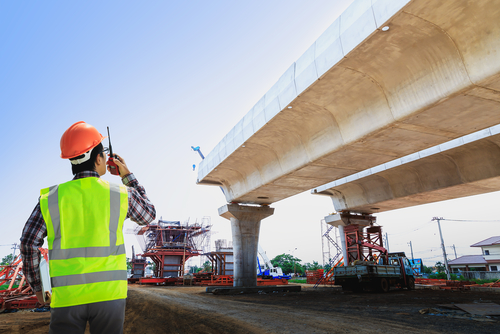
The U.S. transportation infrastructure market is expected to continue growing in 2020, according to projections from the American Road & Transportation Builders Association (ARTBA), but the outlook for surface transportation reauthorization could temper that growth.
Alison Premo Black, chief economist for ARTBA, in an annual economic forecast projects that investments in transportation infrastructure in 2020 would grow by at least 5 percent, after increasing 8 percent in 2019.
“The real market growth for 2020 is being fueled by increased transportation investments from federal, state and local governments,” Black said. “The growth we saw in 2019 is continuing and I think that reflects the new money from states going into the pipeline for transportation construction.”
Black said she expects total domestic transportation construction market activity, after adjustments for project costs and inflation, to reach $300.4 billion in 2020, up from 2019’s $286.5 billion.
Transportation construction grew in 2019 by 8 percent compared to the prior year, driven mostly by work on highways, streets and pavement, ARTBA said. The largest market sector, public highway, street and related construction investment by state transportation departments and local governments, is expected to rise by 6 percent to $77.5 billion after growing 15 percent in 2019. Construction work on private highways, bridges, parking lots and driveways will increase from $69.1 billion in 2019 to $71.8 billion in 2020 and will continue to grow over the next five years as market activity increases in those sectors, Black found.
Other areas of growth in ARTBA’s forecast include:
– A 3 percent or $800 million increase in bridge and tunnel construction work in 2020 after a slight fall in 2019;
– A 5 percent increase in public transit and rail construction to $24.2 billion in 2020;
– A slight increase in airport terminal and related construction is forecast for 2020 after a 34 percent increase in 2018. Airport terminal and work on structures like parking garages, hangars, air freight terminals and traffic towers, is estimated to increase from $18.5 billion in 2019 to $19.6 billion in 2020;
– Investment in ports and waterway construction is forecast to grow to $3.4 billion in 2020, up from $3.3 billion in 2019.
Black said whether Congress reauthorizes the Fixing America’s Surface Transportation (FAST) Act transportation law could impact spending, but the true impact won’t be seen until the second half of 2020 and into 2021. Signed into law under President Barack Obama in 2015, the FAST Act provided long-term funding certainty for surface transportation infrastructure planning and investment. The FAST Act is set to expire in September 2020, and how Congress handles the reauthorization could determine whether state and local governments hold back on their construction projects.
“The scenario of what’s going on at the time will have an effect on how state and local governments handle their projects,” she said. “If Congress only authorizes a number of short-term extensions, the uncertainty there may cause some states to say ‘We’ll hold off on these projects until we know whether or not we can count on the funding.’ Mostly it will impact the pipeline in 2021 though.”
Black said the fact that the Senate is already in discussions about the FAST Act is a good indicator that Congress could approve legislation in 2020.
Meanwhile, despite the growth forecast in transportation spending, brought on in part by increased revenues through gas taxes and other taxes, Black said it still won’t be enough to meet the nation’s infrastructure project needs.
“There’s always a need for additional funding,” she said. “We’ve never had a state say, ‘We’ve raised our rates and now we have enough money.’”